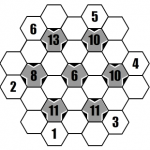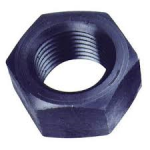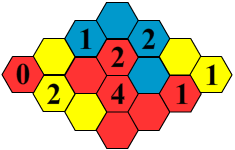 Today’s puzzle is another original puzzle called Number Junctions. I originally named these puzzles Octangles as they contained a collection of octagons. However, when Mindware published them in book form (actually two books), they changed the format to circles and subsequently the name. Number Junctions are easy to understand – all you need to do is to place the given numbers into the small following the simple rules (or directions). In order to correctly solve these puzzles, you will only need to use basic addition and your deductive reasoning skills. Each puzzle is an nxn grid (like 5×5 or 9×9) of circles. Between every group of four circles is a “diamond” containing a number. This number is the sum of the numbers in the four surrounding circles. Finally, each row (and column) contains the numbers 1 through n once and only one (just like Sudoku). You just have to place the numbers correctly into the empty circles
Today’s puzzle is another original puzzle called Number Junctions. I originally named these puzzles Octangles as they contained a collection of octagons. However, when Mindware published them in book form (actually two books), they changed the format to circles and subsequently the name. Number Junctions are easy to understand – all you need to do is to place the given numbers into the small following the simple rules (or directions). In order to correctly solve these puzzles, you will only need to use basic addition and your deductive reasoning skills. Each puzzle is an nxn grid (like 5×5 or 9×9) of circles. Between every group of four circles is a “diamond” containing a number. This number is the sum of the numbers in the four surrounding circles. Finally, each row (and column) contains the numbers 1 through n once and only one (just like Sudoku). You just have to place the numbers correctly into the empty circles
Click here for a detailed set of rules and an example puzzle.
Here is an easier 5×5 Number Junctions puzzles from my second book for you to try.
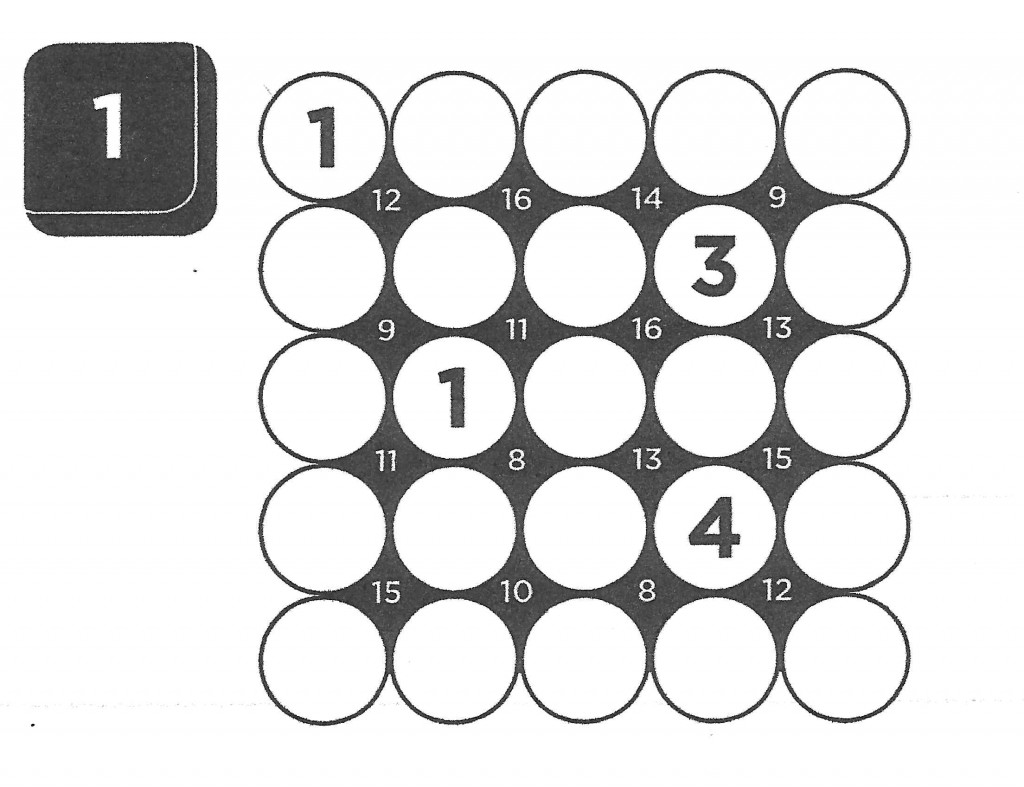
For a more challenge 9×9 Number Junctions puzzle click here!
If you like these Number Junctions puzzles, take a look at the books of Number Junctions that I wrote which is available on mindware. Good Luck and pass the puzzles onto others who may enjoy them!
Mental Math
Holiday Puzzle 2015 #13 – Number Junctions
December 13th, 2015 by John LehetHoliday Puzzle 2015 #6 – Kuruko Puzzles
December 6th, 2015 by John LehetToday’s puzzle is an original puzzle idea that I named Kuruko puzzles. (Sounds nearly exotic doesn’t it?) In any case, these puzzles are somewhat like Sudoku puzzles in that you need to fill in empty “boxes” with numbers following a given pattern. In Sudoku, the “boxes” are squares and they are evenly distributed in chess board-like grid. In Kuruko, the “boxes” are hexagons and they are distributed in a hexagonal pattern. Some of the hexagons are gray (7 of them) and some are white (24 of them). Around each gray hexagon there are six white hexagons. Also, three of the six white hexagons surrounding each gray hexagon “point” to the gray hexagon with a black arrow. Just like Sudoku, Kuruko has some very simple rules to follow, actually just two rules:
Rule 1. The number in each gray hexagon is the sum of the numbers in the three white hexagon pointing to it.
Rule 2. Each gray hexagon is surrounded by the numbers 1 through 6 once and only once in each of the six surrounding white hexagons.
Here’s and example puzzle and solution:
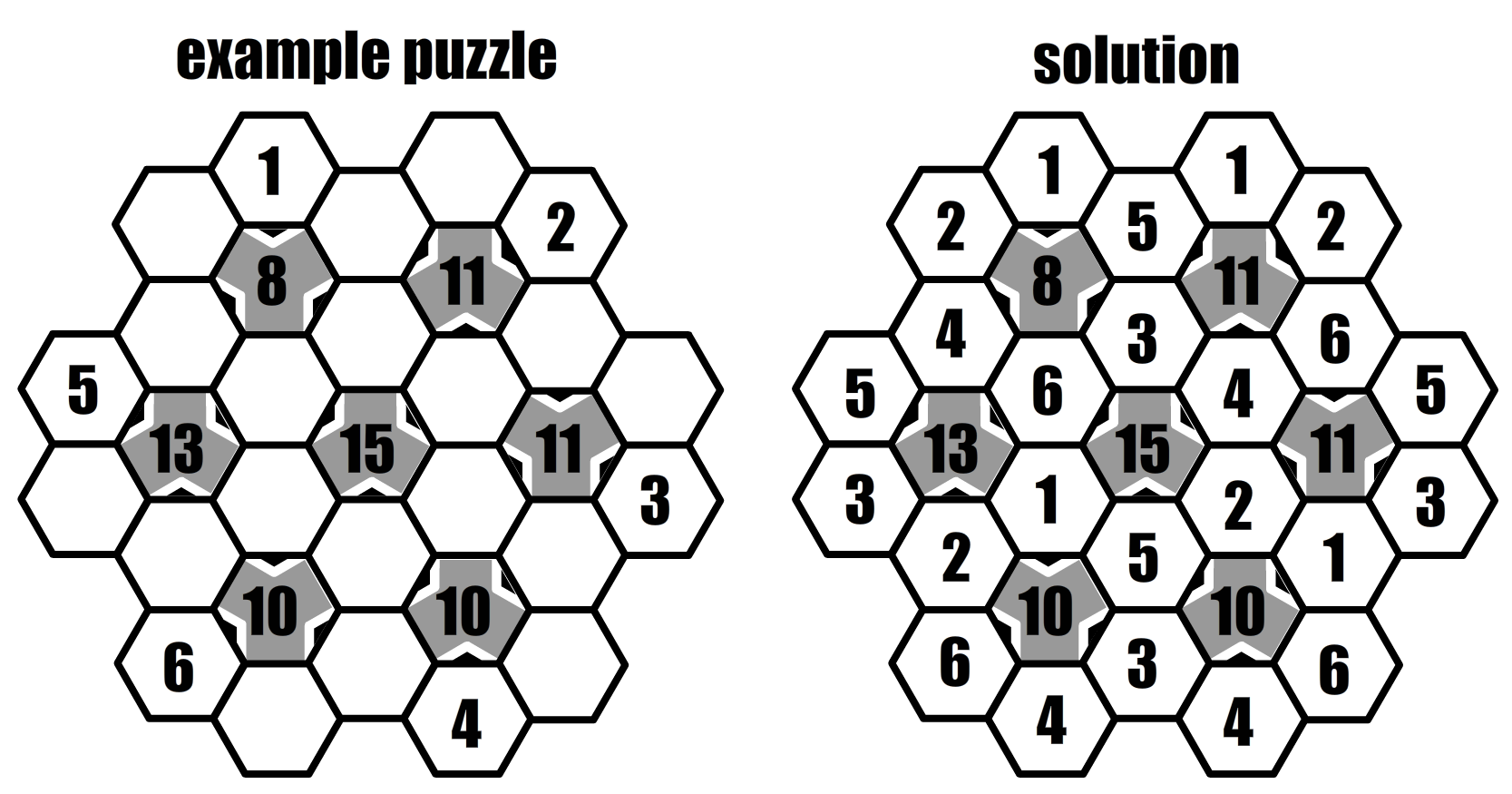
Now for the puzzles. Below are two Kuruko puzzles from my Kuruko puzzle book containing 100 original Kuruko puzzles. Just following the simple rules to solve and Good Luck!

I hope you enjoy these Kuruko puzzles. If you like them, check out my book of 100 Original Kuruko Puzzles available on amazon.com. It’s a great and challenging collection of puzzles. Good Luck and pass the puzzles onto others who may enjoy them!
Tuesday’s Twister #13 – Prime Numbers
May 19th, 2015 by John Lehet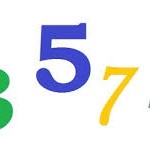
“There are three kinds of people: Those that make things happen, those that watch things happen and those that wonder what happened. ” – Agent Garbo (Juan Pujol Garcia)
Prime numbers are everywhere and they are really easy to understand. There are just two simple rules to follow:
- – a prime number is a positive integer greater than 1
- – a prime number is evenly divisible by only 1 and itself
That’s pretty straight forward. Many people assume 1 is a prime number, but by definition, it’s not. It’s important to realize and remember this when dealing with primes. Also, 2 is the only even prime number, as all other even numbers are divisible by 1, 2 and itself.
Here’s a couple of prime number puzzles to start you off.
puzzle 1: What is the smallest 2-digit prime number in which both digits are prime and their sum is prime?
puzzle 2: What is the largest 2-digit number in which both digits are prime and their sum is prime?
Let’s look at an example number, say 73. 73 is a prime number and it’s digits, 7 and 3 are both prime. However, the sum of the digits 7+3 equals 10, which is not prime. So, 73 will not work for either puzzle 1 or puzzle 2.
Once you solve the first two puzzles, you should have a good handle on prime numbers. I recommend listing all of the prime numbers less than 100. To make it a bit more challenging, let’s look at 3-digit numbers.
puzzle 3: List all 3-digit numbers that have prime numbers for all three digits.
puzzle 4: Of the numbers listed in puzzle 3, list the numbers in which the digits sum to a prime number.
puzzle 5: Of the numbers listed in puzzle 4, which of the numbers are themsleves prime?
Let’s look at an example 3-digit number, say 235. the digits, 2, 3 and 5, are all prime numbers. However their sum, 2+3+5, equals 10, which is not a prime number (so it doesn’t work for puzzle 4).
Good luck with the puzzles and have fun.
Tuesday’s Twister #12 – Sequences
May 13th, 2015 by John Lehet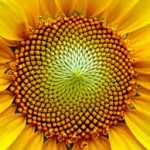
“Lost time is never found again.” – Ben Franklin
When working with students in elementary school, I like to talk about sequences or number patterns. I often present them with the start of a sequence, say the first three numbers. I then ask the class to give me the next term (or number) in the sequence. Letting everyone in the class mull it over for a bit, I ask for the pattern (the code essentially) and the next few numbers. When I first did this, I was amazed! I had a sequence in mind, but the students kept giving different, yet very viable sequences. Not only that, they could justify their answers by supplying the “code” for the sequence. I quickly realized that with just three numbers at the start of a sequence, the possibilities were plentiful. It was quite the challenge for the students also.
So, I started doing this as a “break the ice” activity with classrooms. We would use the same three numbers again and again, and see how many different (yet viable) sequences could be made. When they give me a sequence and its corresponding justification, I would say “great, let’s find another” and erase it leaving only the first three “seed numbers” that I had originally written. I would then ask them to give me another different sequence and the whole thing would start over again. Each time I do this, I am still amazed at how many different sequences they come up with and how challenging they find it. Here’s the start of a sequence for you to try …
Here’s three numbers that start a sequence: 2, 3, 5, . . .
What do you think the next number can be? How about the number after that? Remember, it has to follow a pattern, so you can easily find each successive number by applying the pattern.
I’ve given this pattern to numerous classrooms. Each time, they came up with a variety of different answers, all of which make a valid sequence. For the next number, classes have given 7, some have given 8 while others have given 14. In all, from all of the classes, I have received 9 different sequences that these three numbers can generate (and there’s even more!).
My challenge to you is to find as many different sequences that can be generated using the first three numbers 2, 3, 5. Remember don’t just come up with the sequence, but identify the pattern that it follows. Challenge yourself to see if you can find nine different sequences. Good luck, have fun and challenge others, the more the merrier!
If you like this puzzle, click LIKE below! Thanks.
Tuesday’s Twister #11 – Number Circuits
May 5th, 2015 by John Lehet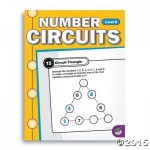
“Go fast slowly” – Clarence Stephens
Number Circuits are an original puzzle that I came up with a few years ago. They are number sense puzzles that require you to arrange a set of numbers in a designated pattern. I used magic squares as a theme using shapes other than squares. In all, I was able to develop over 200 puzzles all with this same theme. Fortunately, Mindware liked the puzzles and published two books. I was pretty excited (and still am). The books differ in difficulty, although neither set of puzzles are too difficult (although all puzzle are challenging when you can’t solve them!). Below are four puzzles, two from each book. I believe they’re representatve of each collection and Number Circuit puzzles in general. Click each picture to open a full sized pdf image of each puzzle in a new window.
| from Number Circuits A |
from Number Circuits B |
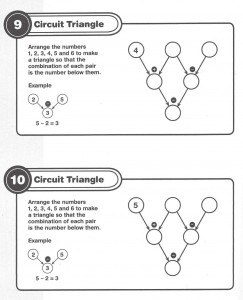 |
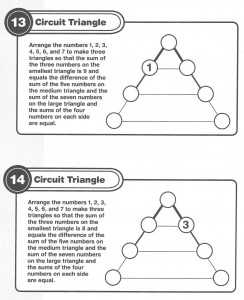 |
As always, I hope you enjoyed these puzzles. Please pass them onto others who may enjoy them and please click LIKE below if you like them!
MIndware currently has the books for sale for only $3.95 (that a 69% savings!). If interested in purchasing either book just click below:
Number Circuits A (Beginner Puzzles)
Number Circuits B (Advanced Puzzles)
Tuesday’s Twister #7 – More Hex Codes
February 17th, 2015 by John LehetToday’s puzzles are Hex Codes. I introduced some Hex Codes during the Holiday Puzzles back in December. Each puzzle is a collection of adjacent hexagons that follow a pattern. In today’s puzzles, each hexagon contains either a number or is empty. The objective is for you to fill in empty hexagons with the correct number that follows the given pattern. You must determine the pattern that each puzzle exhibits in order to correctly complete each puzzle. The hexagons may vary in color which may be of importance (hint, hint, nudge, nudge). Some of the puzzles may use addition or subtraction, while others may utilize some other connection (like adjacent hexagons or the color) between certain attributes. That’s all for you to figure out.
Below are two Hex Code puzzles for you to try. All you need to do is to figure out the pattern in each puzzle and then use it to fill in the empty hexagons. The puzzles are different codes so the colors have different meaning within each puzzle. Best of luck!
Puzzle 1
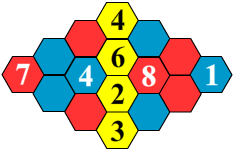
As always, I hope you enjoyed these puzzles. Please pass them onto others who may enjoy them and please click LIKE below if you like them!
Tuesday’s Twister #2 – Fibonacci’s Only
January 6th, 2015 by John Lehet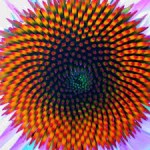
“The most beautiful thing we can experience is the mysterious. It is the source of all true art and science.” – Albert Einstein
Here’s a new original puzzle that goes along with many of my Holiday puzzles (Even’s Only, Odd’s Only, Prime’s Only). In the same theme, this is another great challenge for everyone. It emphasizes combining the first five Fibonacci numbers (1,2,3,5 and 8) with addition, subtraction, multiplication and division using the rules of order of operations.
The Fibonacci numbers are a sequence of numbers in which the next number can be generated by adding the two previous numbers. The sequence starts with two 1’s or 1,1. The next number is 2 (or 1+1) making the sequence 1,1,2. The next number is 3 (or 1+2) making the sequence 1,1,2,3. Following this pattern, the sequence continues as 1,1,2,3,5,8,13,21 and so on as it continues forever.
The rules of the puzzle are simple:
1. Use only the numbers 1, 2, 3, 5 and 8
2. Use each number once and only once
3. Use any of + – x / to combine the numbers
4. Use parenthesis () as desired
5. Following rules 1-4, make the numbers 0-9
For example, “10” can be made as “8 + 5 – 3 x (2 – 1)”. In this example, each number (1,2,3,5,8) was used once and only once as required. There are other ways to make “10” which would also work.
I put together a little interactive program for this puzzle. You can enter your answers for each number and then select check. Your answers will be scored and a response provided (e.g. “got it!” or “need to use 1,2,3,5 and 8″). Give it a try and let me know what you think. Click here for a pdf file.
I hope you enjoy this puzzle. Good luck and pass it onto others who may enjoy them! If you get stuck and would like the solutions, use the “Contact Us” button and we will reply.
In order to use the interactive puzzle, you need to have adobe flash enabled.
Holiday Puzzle #23 – Number Circuits
December 23rd, 2014 by John Lehet
“Magic is believing in yourself. If you can do that, you can make anything happen.” – Johann Wolfgang von Goethe
Today’s puzzle is an original puzzle – Number Circuits. Initially I named these puzzles Magic Puzzles. However, when Mindware agreed to publish the puzzles, I agreed to change the name. I currently have two books of different levels of difficulty available, conveniently named Number Circuits Level A (easier) and Number Circuits Level B (harder), both of which are available on Mindware. As with many puzzles, the concept is very straight-forward and getting an answer is very easy, but getting the correct answer is a bit more challenging.
Below is an interactive puzzle sampler with six puzzles. These are drag-and-drop puzzles in which you can select a number in a yellow circle (left click and hold) and drag to an empty circle (move the mouse and release left click). The number should “snap” to the nearest empty circle (assuming it’s close enough). Each puzzle contains directions and there is a general help button that provides further information. Good luck! Click here to request a pdf version of the puzzle.
Good Luck and pass the puzzles onto others who may enjoy them! Tomorrow, Wednesday the 24th, will be the last day of my Holiday Puzzles. I promise it will be a fun puzzle that everyone will be able to try!
In order to use the interactive puzzle, you need to have adobe flash enabled.
Holiday Puzzle #21 – Alice in Self-Referential Land
December 21st, 2014 by John Lehet
“Begin at the beginning and go on till you come the end; then stop.” – Lewis Carroll
Alice returned to wonderland to find that things were very little changed. She ran into many of her old acquaintances along the way, discovering they too had changed very little. However, she quickly discovered that her new adventures would have a self-referential twist.
Below are two of Alice’s encounters with the caterpillar. In the first puzzle, the caterpillar pulls colored and numbered chips from a bag, hiding the numbers from Alice. He provides Alice (and you) with some details about the numbers and you have to determine what they are. In the second puzzle, Alice selects numbered cards from a deck which the caterpillar peeks at. He again provides Alice (and you) with some details about the numbers and you have to determine what the numbers are on each card. The following puzzles are self-referential – so beware – the numbers may change before your very eyes!
Puzzle 1
The caterpillar held a black bag containing different colored chips. On each chip, there was a number. From the bag, the caterpillar selected four different color chips: red, green, blue and yellow. He looked at the number on each chip and then placed it face down in front of Alice. Alice saw the color of each of the four chips, but could not see any of the numbers. The caterpillar noted the following:
The number on the red chip was the number of selected chips with an odd number
The number on the green chip was the number of selected chips with an even number
The number on the blue chip was the number of selected chips with a number greater than 1
The number on the yellow chip was the number of selected chips with a number less than 2
Can you tell the sum of the four numbers on the selected chips?
Can you tell what number was on each chip?
Puzzle 2
Alice selected five cards from a deck of cards and placed them face down in front of the caterpillar. The caterpillar secretly looked at each card. After looking at the fifth card, he smiled and said “very interesting! The cards contain the numbers 1,2,3,4 or 5, either once, more than once or not at all”. He then told Alice the following:
The number on the first card is the number of odd numbers on the selected cards
The number on the second card is sum of the numbers on the first and fifth cards
The number on the third card is a number different than all of the other numbers
The number on the fourth card is the difference of the numbers on the first and fifth cards
The number on the fifth card is the number of even numbers on the selected cards
Can you tell the numbers on each of the selected cards?
I consider these puzzles to be very challenging. Be patient and go fast slowly. Here are links to two more self-referetial puzzles #7 (a collection of self-referential puzzles) and #14 (Who Killed Phil M. Mupp). I am currently generating a book of original self-referential puzzles, all of which have a story behind them (much like the above). The first chapter is devoted to Alice and her new adventures with self-referential puzzles. I hope to have the book out early next year. Click here to look at all of my currently available puzzle books (on Amazon). Good Luck and pass the puzzles onto others who may enjoy them!
Holiday Puzzle #18 – Prime’s Only
December 18th, 2014 by John Lehet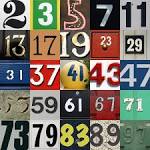
“Things turn out best for the people who make the best of the way things turn out” – John Wooden
Here’s a new original puzzle that goes along with the Thursday’s puzzles from the past two weeks, Even’s Only and Odd’s Only. In the same theme, this is another great challenge for everyone. It emphasizes combining the first four prime numbers (2,3,5 and 7) with addition, subtraction, multiplication and division using the rules of order of operations. Many falsely believe that 1 is a prime, but sadly it is not (how lonely to be 1 – excluded even from the primes).
The rules are simple:
1. Use only the numbers 2, 3, 5 and 7
2. Use each number once and only once
3. Use any of + – x / to combine the numbers
4. Use parenthesis () as desired
5. Following rules 1-4, make the numbers 0-9
For example, “10” can be made as “5 x 3 – 7 + 2″. In this example, each number (2,3,5,7) was used once and only once as required. There are other ways to make “10” which would also work.
I put together a little interactive program for this puzzle. You can enter your answers for each number and then select check. Your answers will be scored and a response provided (e.g. “got it!” or “need to use 2,3,5 and 7″). Give it a try and let me know what you think. Click here for a pdf file.
I hope you enjoy this puzzle. Good luck and pass it onto others who may enjoy them!
In order to use the interactive puzzle, you need to have adobe flash enabled.


